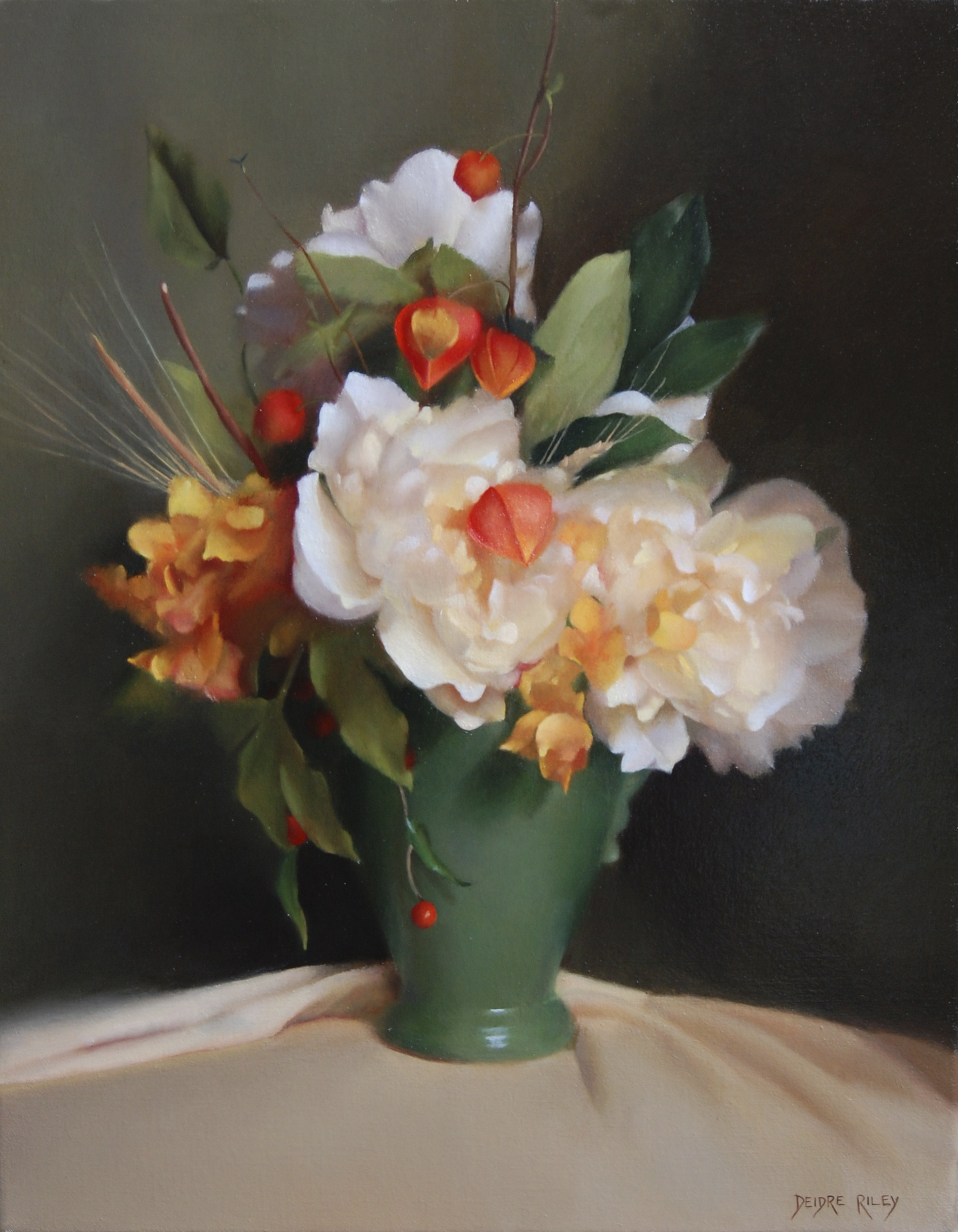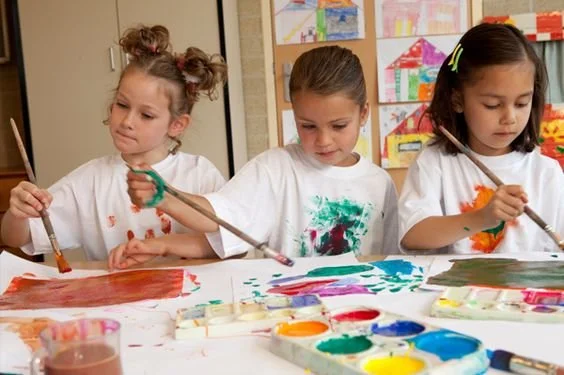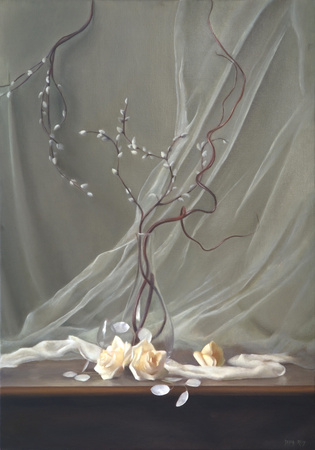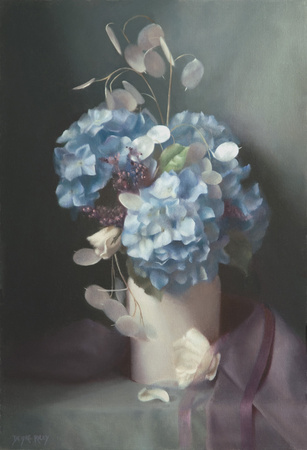How seeing what delights young children helps in establishing what art is, teaching principles for all art students, young and old.
Be Precise When Drawing a Line and You Can Be Expressive in the Application Color
Sacred Art Institute, Enders Island, CT, Announces 2020 Program
The Sacred Art Institute offers evening, afternoon, and week-long residency workshops in Iconography, Illumination, Calligraphy, Stained Glass, and Sacred Music among others. All Sacred Art Workshops feature highly skilled instructors
Work from the Drawing Course at Thomas More College, Summer 2013
Here is the work produced by the students who attended the summer that took place at Thomas More College of Liberal Arts. It was a two week course offered in conjunction with the Ingbretson Studio. Students spend the working days at the studios learning to draw using the academic method (which can trace its history back to figures such as Leonardo). In the evenings and at the weekend in the middle there was a full program of talks and museum visits plus daily Mass, in the Extraordinary Form, first thing each morning.
With its origins in the earlier High Renaissance, the method was developed to teach the naturalistic style of the baroque and reached its zenith in the 17th century. The visual vocabulary that it transmits cannot be understood except in the context of the Catholic liturgy. It is this additional component, therefore, that makes the partnership between the Ingbretson Studios and TMC such a unique offering. Most ateliers teaching this method tend to focus on a 19th century ethos, which is different and non-Christian. The 19th century style of naturalism, though superficially similar, was a sterile neo-classicism. It was the reaction to this that caused the modern art movement.
Cast drawing is the at the core of learning this method, by which students learn to think tonally and in see and draw in shapes rather than lines. These are the product of two weeks' hard work.
An Account and Pictures from the Way of Beauty Summer Atelier
 The Way of Beauty Atelier has completed the two-week workshops in both naturalistic drawing and icon painting It was a great experience for me. What was so pleasing for me was the number of people who came who are making a serious commitment to becoming artists and in one case an architect who will serve the Church and who are rooted in her traditions. I show pictures of the classes and their work below. In response to requests from a number of these students, we are already planning a series of events through the year and also the possibility of longer, perhaps six-week, residencies at the Way of Beauty Atelier for more experienced students who will work on individual projects and receive personal direction and critiques. I can't wait to see it happen. Some pictures are below. I would encourage readers to read a very interesting and fuller account by artist Gwyneth Holsten, who attended the naturalistic drawing workshop this summer and posted it on her blog. Some of the photographs used are from her blog posting.
There are still spaces on the one remaining class in the Way of Beauty summer series, our retreat in creativity and inspiration, see here. This is a long-weekend even starting on August 4th and presents the methods that artists used traditionally to develop creativity and an openness to inspiration. As such it will be of interest to anyone who wishes to be creative in any field, not just art. We will include some lectures on the artistic traditions of the church to demonstrate the principles that we are seeking to communicate. So it will be of interest to art lovers as well.
The Way of Beauty Atelier has completed the two-week workshops in both naturalistic drawing and icon painting It was a great experience for me. What was so pleasing for me was the number of people who came who are making a serious commitment to becoming artists and in one case an architect who will serve the Church and who are rooted in her traditions. I show pictures of the classes and their work below. In response to requests from a number of these students, we are already planning a series of events through the year and also the possibility of longer, perhaps six-week, residencies at the Way of Beauty Atelier for more experienced students who will work on individual projects and receive personal direction and critiques. I can't wait to see it happen. Some pictures are below. I would encourage readers to read a very interesting and fuller account by artist Gwyneth Holsten, who attended the naturalistic drawing workshop this summer and posted it on her blog. Some of the photographs used are from her blog posting.
There are still spaces on the one remaining class in the Way of Beauty summer series, our retreat in creativity and inspiration, see here. This is a long-weekend even starting on August 4th and presents the methods that artists used traditionally to develop creativity and an openness to inspiration. As such it will be of interest to anyone who wishes to be creative in any field, not just art. We will include some lectures on the artistic traditions of the church to demonstrate the principles that we are seeking to communicate. So it will be of interest to art lovers as well.
The Still Lives of Deirdre Riley
 Teacher of Thomas More College students I recently featured the work of students from Thomas More College who are in the St Luke Guild and learned the traditional academic method of drawing. Their teacher was Deirdre Riley, who has been studying with Paul Ingbretson for five years. Here are some examples of her still lives.
Deidre Riley can be contacted through www.DeirdreRiley.com
Teacher of Thomas More College students I recently featured the work of students from Thomas More College who are in the St Luke Guild and learned the traditional academic method of drawing. Their teacher was Deirdre Riley, who has been studying with Paul Ingbretson for five years. Here are some examples of her still lives.
Deidre Riley can be contacted through www.DeirdreRiley.com
Pilgrimage to a Forgotten Ancient Church in Matera, Italy
 Matera is in southern Italy (just inland from the arch in the boot-shaped country). In the later classical period and through to the Middle Ages it has been occupied by Romans, Lombards, Byzantines, Germans and Normans and the handover was usually less than peaceful. The area is known for its underground churches, rather like the catacombs but dating much later. My former teacher when I was studying the academic method in Florence, Matt Collins, now lives there. Matt is an American and one of the few people around that I know who has applied his academic training to painting in the baroque style (as distinct from the 19th century). As well as oils, he is an expert in the technique of fresco and runs regular classes in Italy teaching this ancient and very durable technique.
The underground churches of Matera contain many frescoes and they have survived the Romans and all the waves of conquerers, only to be damaged recently by modern-day vandals and graffiti artist. What a shame! Matt describes them in his blog and it is his pilgrimage that the title refers to. The painting shown is Matt's landscape of the approach to the entrance of two underground churches. To read more about his, go to his article by following the link here. You can also see more of his work there too.
Matera is in southern Italy (just inland from the arch in the boot-shaped country). In the later classical period and through to the Middle Ages it has been occupied by Romans, Lombards, Byzantines, Germans and Normans and the handover was usually less than peaceful. The area is known for its underground churches, rather like the catacombs but dating much later. My former teacher when I was studying the academic method in Florence, Matt Collins, now lives there. Matt is an American and one of the few people around that I know who has applied his academic training to painting in the baroque style (as distinct from the 19th century). As well as oils, he is an expert in the technique of fresco and runs regular classes in Italy teaching this ancient and very durable technique.
The underground churches of Matera contain many frescoes and they have survived the Romans and all the waves of conquerers, only to be damaged recently by modern-day vandals and graffiti artist. What a shame! Matt describes them in his blog and it is his pilgrimage that the title refers to. The painting shown is Matt's landscape of the approach to the entrance of two underground churches. To read more about his, go to his article by following the link here. You can also see more of his work there too.
The photograph above is of the entrance to the ravine, and below, of the entrance to one of the churches in the hillside.

Inside with the apse with niche and altar

And finally, just if any are wondering what Matt's art is like here is a beautiful still life displaying the classic baroque stylistic element that readers of this blog will recognise - the variation in focus; the depletion of colour and reduction of contrast away from the natural foci of the composition.













